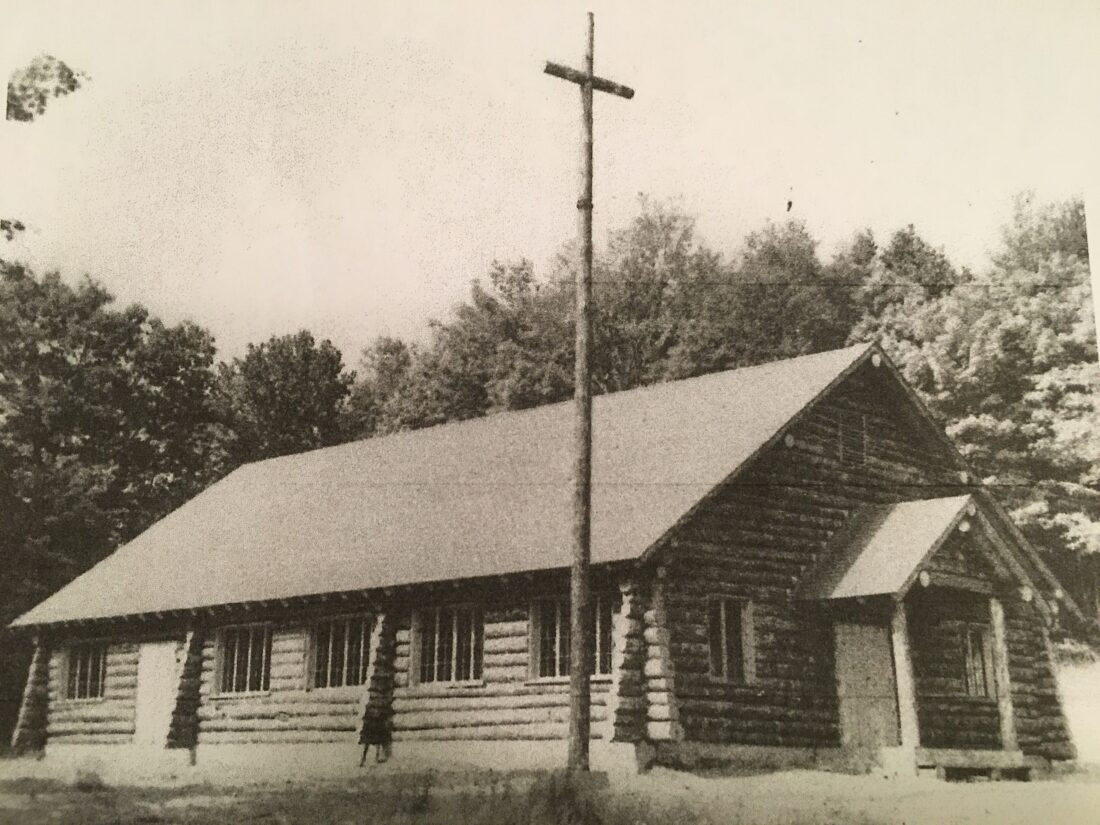Historically speaking
LOG CRAFT: Almost a forgotten art

Building log buildings in the traditional way has become a lost art in modern times. (Negaunee Historical Society photo)
NEGAUNEE — Craftsmen of Richmond Township, of Finnish descent were known as experts in the construction of log buildings.
Among them were the Larson brothers. Pine logs were cut during the winter months and allowed to dry. Then they had to be peeled. The designer would have to allow for 1/4 inch of shrinkage per log after a building was made.
The bottom log of each wall was hewn flat on the bottom to meet the building’s footing. After that each log that was laid was conclaved on the bottom with a concave chisel to match the log below. At the corners the logs were “dog eared” where the two walls met.
The door and window openings were slotted at the end of the log for a two by two reinforcing slat. Rafters for the roof were hewn to fit the top of the wall and the logs on the end walls were hewn to fit the shape of the roof.
It was estimated that a man could lay 30 feet of log per day. Log buildings could be expected to last for many years.
They were weathertight, being caulked with moss during the early years, then later with okum and still later with paste type caulking compounds.
Log sealants included mixtures of beeswax and linseed oil and in some instances, creosote. One of the craftsmen that I write about is my father, John Larson.
John’s first log building was a sauna built in the early 1930’s on his property in Suomi Location. It was considered his practice project. It was no longer being used at that site: it was moved to Pike Lake and is still in use. He then built a log home but it has since been covered with siding.
In the 1940’s Gordon McCormick, heir of the McCormick Tract property, began a renovation of all buildings. John Larson was hired to build the log boat houses and the bridge at White Deer Lake.
It was in 1946 when he made his first trip into the Michigamme Institute (as it was called then) to look at the area that was to be the new chapel. Ted Tonkin, who was the caretaker at McCormicks was also associated with the Methodist church camp and I would guess that as a result, John Larson was hired to build the chapel.
In the fall of 1946, the concrete foundation was poured so that construction could start in the early spring of 1947. The Larssn family began the challenge. John and his brothers, Emil and Charlie, John’s son’s John Larson the third and Eugene Larson comprised the crew.
By the time camp opened up in July 1947, the chapel was completed. John and Emil Larson constructed many log camps on various lakes in the area, Three Lakes, Fish and Kings Lake, Big Bay, and several lakes in the Gwinn area. Emil Larson built a log home for his daughter Mary Brintlinger and her family on M-35 in Suomi Location.
The home is still occupied by Emil’s granddaughter, Heidi, and her husband Kim Lenten. Emil’s grandson, Taylor Brintlinger has learned how to take care of his grandpa’s log work.
Thank you to Alan Larsen for the photo and some camp information.from his book Camp Michigamme.






